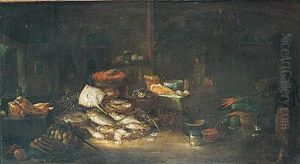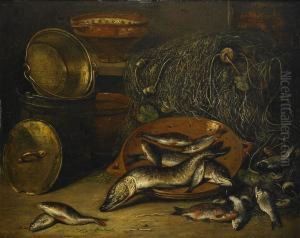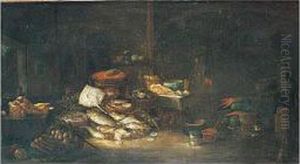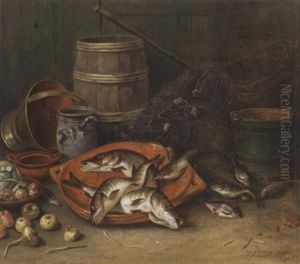Jan Rentinck Paintings
Jan Rentinck was a Flemish Baroque painter, active during the 17th century. Little is known about his exact birth and death dates, which is not uncommon for artists of his time. His work falls within the period of the Baroque, which was characterized by dramatic expression, bold manipulation of light and shadow, and a general sense of movement and energy in art. Rentinck's contributions to this period are not extensively documented, and as such, he remains a more obscure figure in the history of art.
Rentinck's artistic output would have been influenced by the broader socio-political and cultural context of the Baroque period, which in Flanders was strongly shaped by the Counter-Reformation. This was a time when the Catholic Church encouraged the arts as a means of religious expression and propaganda. Artists in Flanders, including Rentinck, would have been part of a thriving artistic community, with Antwerp being one of the centers of art production and commerce.
While detailed biographical information on Jan Rentinck is scarce, his works that survive suggest that he was adept in the Baroque style. He likely produced religious-themed works, as was common among his contemporaries, designed to inspire the faithful and decorate churches and other religious institutions. However, due to the lack of records, his works are not as well-known or studied as those of his more famous peers like Peter Paul Rubens or Anthony van Dyck.
In the absence of more specific information about Jan Rentinck's life and oeuvre, art historians must rely on the stylistic analysis of any attributed works and the context of the time in which he lived to understand his contributions to the art world. It is not uncommon for artists of the past, particularly those who did not achieve wide fame in their lifetimes, to be rediscovered and re-evaluated as new research comes to light. Therefore, Rentinck's work and influence may be subject to change as art historical scholarship progresses.



